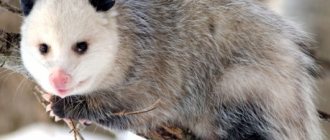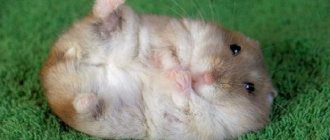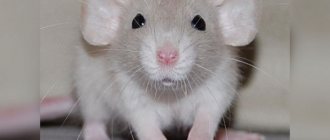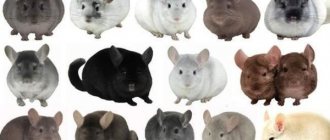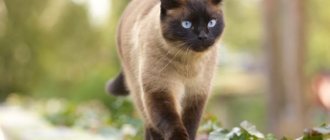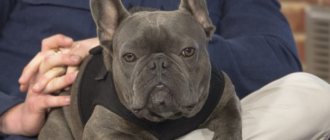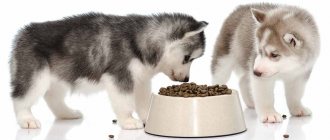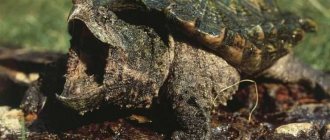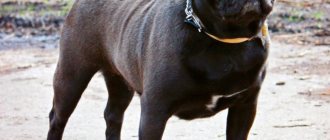The vast forests of Russia are home to many different species of animals. Among them there are also very unusual ones, such as flying squirrels.
Flying squirrels, as they are also called, got their nickname because they can deftly hover between trees, covering considerable distances. This is possible due to the fact that the animals have rather large membranes that connect their front and hind legs. A description of the flying squirrel will be presented below.
Description and characteristics of the species
In flying squirrels, the front and hind legs are connected by a wide, hairy, leathery membrane. It imitates a soft wing, with the help of which the animal glides and descends from the trees. Other species of this subfamily have the same fold between the hind legs and tail, but it is absent in common flying squirrels.
The body is completed by a well-furred tail, which is covered with long and thick hair.
The animal is slightly smaller in size than forest squirrels:
- body length – from 12 to 23 cm;
- tail - about 13 cm;
- weight – 170 g;
- rounded ears without traditional tassels;
- large eyes outlined by dark “glasses”;
- the hind legs are longer than the front legs, with curved and sharp claws;
- Based on their coloring characteristics, experts distinguish up to 10 subspecies.
The flying squirrel has soft, thick and silky fur. It is much more pleasant to the touch than the fur coat of an ordinary squirrel. The back and sides are silver in color, and the animal’s belly is covered with light fawn hair. The tail is heavily bushed, with a small parting in the middle.
This is interesting! Flying squirrels molt twice a year. Winter “clothes” are very lush and thick, while summer wool is more modest and inconspicuous.
Description of the fauna representative
The flying squirrel is a medium-sized animal, with an average body length of 170 mm. The tail of such an animal is quite large compared to the body. On average its length is 120 mm. Now let's look at the ears and feet of the animal. The length of the foot is about 35 mm, and the ear is 18 mm. The average weight of such an animal is 125 grams. A hairy fold of skin (“flying membrane”) running along the sides of the body connects the hind and forelimbs. It also plays the role of a parachute. In front, the fold is supported by a bone that extends from the wrist. The flying squirrel's tail is long and covered with thick hair. The head of this animal is small, rounder than that of an ordinary squirrel. The ears are rounded, short, without tassels. The area around the eyes is black.
Due to the fact that the animal is nocturnal, it has large and bulging eyes. The wool is soft, silky, thin. It becomes especially thick and lush in the winter season. The color of the animal is light gray with a yellowish tint. The tail is lighter than the animal's body itself. The inner surface of the paws and abdomen are dull yellow-white. As a rule, the squirrel has a shortened nasal part of the skull. The flying squirrel's drum chambers are relatively large.
Since the common flying squirrel climbs trees a lot, its limb bones are elongated, especially the forearms and lower legs.
Where do flying squirrels live?
Deciduous tracts have become the traditional place of life for flying squirrels. They can also be found in mixed forests, where coniferous trees alternate with birches, oaks, aspens and alders.
The main location for settlement is river banks, floodplain thickets, and wetlands - here flying squirrels live at an altitude of up to 12 m. Most often, the animals occupy natural tree hollows, but they can also adapt old nests of other squirrels or birds for living. Sometimes flying squirrels are located in crevices of rocky rocks.
This is interesting! Flying squirrels almost never conflict with each other. Often several animals live in one nest, and their food supply is located in a common area.
Main types
The flying squirrel belongs to the Squirrel family and the order Dvureztsov. About ten species of flying squirrels are known, differing in appearance and habitat. Seven of them live in Russia: Yakut, Central Siberian, Sakhalin, Ussuri, Anadyr, West Siberian and Semipalatinsk varieties.
Australian flying squirrel
Another name for the Australian flying squirrel is the sugar glider.
It lives in Australia, as is clear from the name of the species. She arranges her home in eucalyptus forests, because... loves to feed on the juice of these plants and acacia. It is Australian flying squirrels that are most often kept as pets.
Many animals suffer from the activities of people working on the black market. Most often, cute flying squirrels are transported to other countries with all possible violations of transportation rules. In Australia, there are centers to rescue flying squirrels that have suffered from cruel human activities.
Siberian
The Siberian flying squirrel is considered one of the cutest animals
Siberian squirrels live in Europe, Asia and India. Despite the harsh Siberian climate, they do not hibernate, but continue to stay awake throughout the winter, feeding on supplies made in the summer. However, flying squirrels can fall asleep for several days and remain asleep throughout this time. Many animals do not survive cold winters for one reason or another, so their numbers are steadily declining.
Japanese
The Japanese squirrel is practically no different from the Siberian in appearance, the difference lies in the habitat
The Japanese variety of flying squirrel is considered the cutest. In Japan the animal is called "Momonga". It lives on the islands of Kyushu and Honshu, where large areas are occupied by evergreen mountain forests. Makes nests in the hollows of powerful pines or other conifers. The inside of the animal lines its home with moss and lichen so that its naked cubs can keep warm in the absence of their mother.
Flying squirrel lifestyle
The animals hunt mainly at night, although young animals and nursing females go out in search of food during the day. Flying squirrels spend the rest of the time in the nest or in the trees. The animal rarely descends to the ground.
Flying squirrels move by jumping, the length of which reaches 90 meters. To do this, the animal climbs to the top of the tree and from there, along a downward trajectory, moves to the chosen place. The leather membrane between the front and hind legs allows the flying squirrel to correct the jump and change its direction almost at a right angle.
During flight, the squirrel's front legs are spread wide apart, while the hind legs are extended and pressed closely to the tail. In this case, the silhouette of the animal takes the form of a triangular wing, and its head tilts in the direction of movement, reducing the area of resistance to the flow of oncoming air.
The luxurious squirrel tail acts as a brake and corrects the movement at the final stage of the jump. At the moment of landing, the animal turns its body vertically and clings to the tree trunk with the sharp claws of all 4 paws. Immediately after “landing” he is able to run to the other side of the tree. This technique often saves the flying squirrel while fleeing from birds of prey that hunt squirrels and pose the main threat to their lives.
Protecting the squirrel from enemies
The flying squirrel is agile and nimble, it quickly moves through the trees. The traditional threat to it is posed by birds of prey (owls and hawks), and on the ground the animal is hunted mainly by foxes and cats.
In the northern regions and the Far East, their main enemies are martens, and in Asia - sables. But these predators do not have a significant effect on the lifespan of flying squirrels. Much worse for the population are periodic seasonal epizootics (territorial spread of infections), ticks, worms and fleas.
Nutrition
The diet of flying squirrels consists of approximately 70% plant foods, most of which are fruits (mango, apple, melon, watermelon). The remaining 30% comes from protein foods. Basically, these are grain crops in the form of muesli and milk porridge.
The preferred vegetables are zucchini, cucumbers (seasonal only!), cabbage, and sweet carrots. You can put a tree branch with leaves in the cage. Animal food is also required: mealworms, green caterpillars without lint, grasshoppers, beetle larvae. If it is not possible to provide live food, you can temporarily replace it with boiled chicken fillet, cottage cheese, or a boiled egg. Low-fat yogurt, devoid of flavoring additives, is also beneficial for possums.
What do flying squirrels eat?
The basis of nutrition for the animal is the buds of trees. Like ordinary squirrels, flying squirrels prefer young needles. Also used are the bark of deciduous trees (birch, aspen), shoots and seeds. In the summer, the menu is replenished with mushrooms and berries, but to do this you need to descend from the trees to the ground, which flying squirrels do not like to do.
Contrary to popular belief about storing mushrooms for the winter, flying squirrels pay more attention to birch and alder catkins. They bring them to the nest and store them for a long time, until the onset of the cold season.
The animal's diet largely depends on its habitat. For example, Siberian flying squirrels use only larch buds as winter food.
Hunger has a much stronger effect on the population size of the animal than natural enemies and diseases. Even if a flying squirrel has hidden a sufficient amount of supplies in the summer and autumn, it quickly forgets about them and later, quite by accident, finds its own warehouses.
In winter, the squirrel often descends to the ground, where it can profit from fallen cones or seeds under the snow. Sometimes the animal finds a supply of food made by mice, chipmunks and other animals.
Important! Under natural conditions, a flying squirrel lives no more than 3-4 years. At home, with proper maintenance, its life expectancy reaches 9-13 years.
Flying squirrel breeding
The mechanism of procreation in flying squirrels has been poorly studied due to the small number of the subfamily. It is known that one female gives birth to 2-4 cubs per year. Blind newborn squirrels open their eyes at 2 weeks of age.
After another 20-25 days, they leave the parental nest for the first time, and at 6-7 weeks they are already making coordinated jumps. By 2 months, baby squirrels already know how to control flight and plan. At the same time, the animals begin an independent life.
Interesting fact! The development and maturation of small flying squirrels occurs much faster than that of ordinary squirrels. There, the cubs leave their mother for the first time at the age of 3 months.
Features of keeping flying squirrels at home
From infancy, a flying squirrel living in captivity becomes accustomed to the hands and voice of a person who feeds and cares for it. It is recommended to take babies at the age of 5 weeks, when they are no longer dependent on their mother and can eat on their own.
Setting up housing for a domestic flying squirrel
Since flying squirrels prefer to live in trees in the wild, an artificial house must meet their needs. For the animal, it is best to equip a spacious enclosure in which you can place several tree trunks.
In outdoor conditions, it is not recommended to save space; the flying squirrel must be given the opportunity to make long jumps.
For one squirrel in a cage, it is necessary to allocate an area of at least 1 m2 in size.
It is very important to prepare the shelves, purchase a running wheel, and create other conditions for movement - if the flying squirrel cannot exhaust its supply of natural energy, it becomes lethargic and passive.
Separately, it is necessary to provide places where the squirrel will hide supplies - this instinct is preserved even in a well-fed animal.
The cage must have bedding made of granulated wood or shavings - it will have to be changed daily.
When kept in a cage, the flying squirrel needs to be “walked.” This can be done even in a pre-prepared room. On the street, a squirrel will definitely run away into a tree, and it will no longer be possible to return it home. Even if an animal in a cage reacts to a nickname, in freedom it will instantly forget about it. Therefore, walking is organized only on a strong, long harness, with which the pet can be returned to the hands of the owner.
With proper care, domestic flying squirrels can live up to 13 years.
Feeding flying squirrels at home
The squirrel diet should be as close in composition to natural ingredients as possible. Flying squirrels happily eat young shoots of deciduous trees, buds and seeds.
Protein food is compensated by the presence of larvae, worms and beetles in the animal’s menu (they can be purchased at specialized pet stores). Of the foods that squirrels do not know in their natural environment, you can give apples, carrots, pumpkin, zucchini or bananas.
For water you will need a separate remote drinking bowl.
Flying squirrels do not tend to be clean, so after each feeding (or at least daily), the cage will have to be cleaned of food debris.
Interesting facts about flying squirrels
Keeping a flying squirrel involves many subtleties. Experienced owners know how many problems there are that can complicate the lives of both the pet and its owner:
- It is best to buy a couple of flying squirrels - the squirrel will not be bored in the company of its own kind.
- The animals are nocturnal and begin to make noise just at the time when everyone in the household goes to bed.
- Sometimes, in flying squirrels that were born in captivity, the biological clock is rearranged, and their activity schedule coincides with the daily routine of the owner.
- Locks on cages and enclosures must be strong and complex enough to prevent the squirrel from escaping.
- Children are not recommended to handle flying squirrels to avoid vinegar and accidental injury to the animal.
Keeping a flying squirrel in an apartment has recently become a fashionable trend, but it has not been possible to develop this trend. Most often, these cute animals cannot be trained and quickly forget the skills they have learned. It is impossible to completely tame a flying squirrel. Given any opportunity between well-fed captivity and freedom, she will definitely choose the latter.
Number and security
In order to survive the winter calmly, the animal needs to make good food supplies and make a warm nest.
Despite the fact that flying squirrels actively breed, they are protected by public organizations and are listed in the Red Books of different countries and regions. A large number of animals do not survive during harsh winters, and many cubs die due to other various circumstances. As a result, the number of flying squirrels in various habitats is declining.
